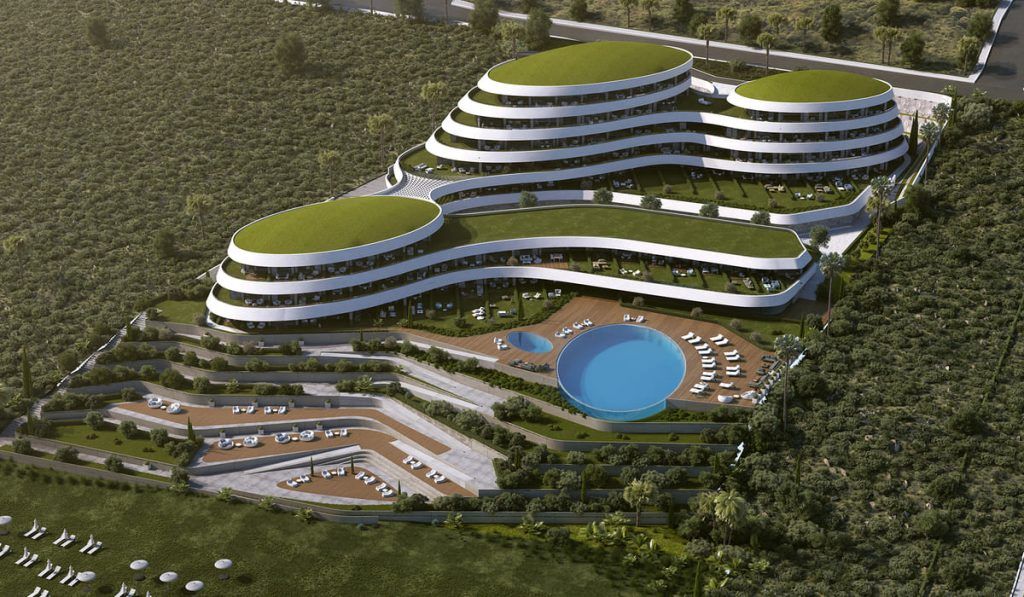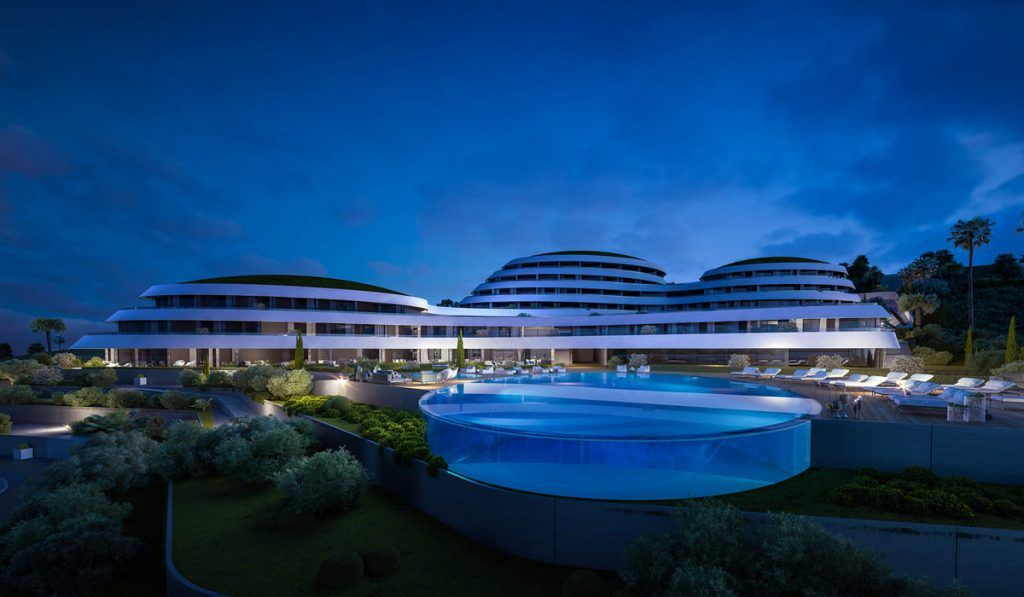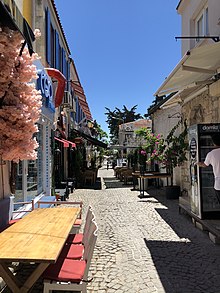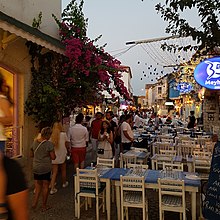Luxury Sea View Apartments for Sale in Cesme
- City: İZMİR PROPERTY
- Property type: Apartment
- Offer type: Sea View
- Neighborhood: Çeşme
- Property ID: 15569
Features
- 2-Storey Indoor Parking Lot
- 24 Hour Security
- Lobby and Recreation Area
- Swimming Pool
- Wi-fi in common areas
Details
Luxury Sea View Apartments for Sale in Cesme
Very good chance to buy property in Izmir. Luxury Sea View Apartments for Sale in Izmir. Our project is built on an area of 13.955 m2 and 8.000 m2 of the project consists of green areas. There are social facilities, 24-hour reception and
security service and indoor parking lot.
Suit concepts range from 1 + 1 to 4 + 1 units.
• 70 units in total
• 6 Storey Project
Fatures:
• Outdoor Swimming Pool
• Swimming Pool for Kids
• Jacuzzi
• 2-Storey Indoor Parking Lot
• Fitness, Pilates and Yoga Room
• Spa and Sauna
• Women’s / Men’s Dressing Rooms
• Lobby and Recreation Area
• 24 Hour Security
• Security System with Camera
General Services:
• Professional Building Management
• General Garden Maintenance of Housing Units
(EXTRA CHARGE)
• Cleaning and Maintenance of Common Areas
• Technical and Hygienic Maintenance of Common
Area Pools
• Beach Maintenance and Cleaning Services.
Furnishing and installation:
• Built-in White Goods
• Kitchen with Modern Modular Accessories
• Heating with VRV System
• IP Infrastructure in Suites
• Automated Water and Electricity Meter Reading
• Generator
• 1 Parking Space for 1+1 Housing Unit, 2 Parking
Spaces for 2+1/3+1/4+1 Housing Units
• Indoor Parking Lot OGS Entrance
• Deck Covered Terraces
• Private Backyard for Ground Floor Flats
• Automatic Garden Watering System in All Terraces
And Common Area Gardens
• Building Material not Affected by the Sea
Housekeeping:
• Car Washing
• Car Rental, Airport Shuttle VIP Transfer Service
• Dry Cleaning Service
• Laundry Service
• Ironing Service (Extra Charge)
Reception:
• Room service (10:00-22:00)
• General Reservation Services
(Restaurant, Concert, Flight Tickets etc…)
• Wake-up Call Service
• Newspaper / Bread Service
• Assistance for emergency services (Call Service for
Doctor, Nurse or Ambulance)
Situation : Ready To Move + Ready Title Deed
Available Units : 1+1, 2+1, 3+1
Payment Plan : 25% Downpayment + 12 Months İnstallment
Starting From ( 2021 s prices )
1+1 : 1.869.000 ₺
2+1 : 3.738.000 ₺
3+1 : 4.365.000 ₺
Luxury Sea View Apartments for Sale in Cesme
Alaçatı – Cesme
Jump to navigationJump to search
|
Alaçatı
|
|
|---|---|
|
Town
|
|

A street in Alaçatı
|
|
| Coordinates: 38°16′53″N 26°22′27″ECoordinates: 38°16′53″N 26°22′27″E | |
| Country | |
| Region | Aegean |
| Province | İzmir |
| Elevation | 16 m (52 ft) |
| Population
(2017)
|
|
| • Total | 9,745[1] |
| Time zone | UTC+2 (EET) |
| • Summer (DST) | UTC+3 (EEST) |
| Postal code |
35xxx
|
| Area code(s) | (+90) 232 |
| Licence plate | 35 |
| Website | www.alacati.bel.tr |
Alaçatı is a part of İzmir on the Western coast of Turkey, often noted for its architecture, vineyards, windmills, and sea.
Alaçatı is one of the most traditional towns in Turkey, with stone houses, narrow streets, boutique hotels and restaurants with tables on the streets. The area is also home to the Alaçatı yacht marina and the famous Port Alaçatı development, created by the French architect Francois Spoerry and his son, Yves Spoerry.[2]
Etymology
There are various theories about the formation of the name of Alaçatı. Some sources claim that the name of the city formulated in the plural number and is considered to have its origin from the ancient Greek word ἅλς (als) – ἅλας (alas), “salt”, plural ἅλατα (alata), “salts”, in the Demotic Greek αλάτι (alati), “salt”, plural αλάτια (alatia), “salts”, which enunciate as Alatzata and Alatsata either due to Turkish alteration of the language (e.g. in Turkish, the word “kalderim” (meaning cobbled road – originated from the Greek kallidromon) or according to a local Greek dialect.[3] During the Ottoman Empire, the word is referred to as the adjective «the alatsatikos» which was a tax collected on salt. The older pronunciation and spelling of the name «Alatzata» seems to disappear at the end of the 19th century. The phoneme –tz then turned to the refined and elegant form of the Greek phoneme -ts. Other resources claim, however, the name Alaca At (Red Horse in Turkish) used for the whole area.[citation needed] Their claim is based on a story, that the ruler of Alaçatı had a red horse to ride. When riding the horse, bystanders would refer to him as “Alacaatlı (the man with the red horse)”, in time the name was somehow changed to Alaçatı.[citation needed] Some resources claim that the name “Ala çatı” (Iridescent Roof) derives from strong winds causing laundries to fly away and land on neighbour houses.[citation needed]
According to the statistics of the High Commission of Smyrna in May 1914, the number of Greek inhabitants of Alatsata that were forced by the Turks to be expatriated were 14.000.[4] Muslim refugees from Greece were settled here, and ever since then the name Alaçatı has been adopted both for the town and the harbour area. The harbour area was called ‘Agrilia’ (Greek: Αγριλιά, “wild olive tree”), and was the export port of İzmir until World War II. After the war, the harbour’s use declined, and the bay, in which the harbour was, is now popular among windsurfers. The town also hosts a lap of the world tournament of windsurfing, famously called PWA.
History
Alaçatı became an Ottoman town in the 14th century, according to some; in the 15th century, according to others.[citation needed] Regardless of the date, Alaçatı was originally settled or founded by Greeks in the 17th century.[5] The Muslim population was 132 out of a population of 13,845 in 1895. After the defeat of the Ottomans in the Balkan Wars, Ottoman Muslim refugees fled to the western coast of Anatolia. Some of the Greek population who survived the forced removal returned in 1919 during Greek administration of Smyrna (1919-1922) when the Hellenic Army occupied the region of Izmir. The majority fled hastily with the retreating Greek Army following Greece’s defeat in the Greco-Turkish War, whilst others fled from the shores of Smyrna.[6][7] The forced emigration of the Greek population, already at an advanced stage, was transformed into a population exchange backed by questionable international legal guarantees.[8]
Under the Treaty of Lausanne in 1923 and according to the implementation of the compulsory exchange of populations, Muslims who fled Crete, Thrace, Macedonia and Dodecanese settled in Alatsata city in the houses abandoned by the Greeks. Most of these houses still remain in Alaçatı as an attraction for people to see.[citation needed]
Architecture
Alaçatı has stone houses with coloured windows and narrow streets with pavements. The centre of Alaçatı has houses from the Ottoman period; the ones that belonged to Ottoman Greeks are distinct, by having an additional enclosed balcony area, alcove window or cumba in Turkish. Typically, enclosed cumba balconies are painted by lilac or pale blue colors. The town was declared as a historical site in 2005; the buildings are well protected. The newly built houses refer to the past architectural principles of the Ottoman houses of the agora of Alaçatı.[9]
Culture
The experiences of novelist Mehmet Culum during his travels in the region inspired him to write Alaçatili, his second novel. The very centre of Alaçatı is famous for viticulture and winemaking as wine factories spread throughout the region of Çeşme but recently the town has picked fame with its developing tourism, boutique hotels and especially with windsurfing.
Festivals
The Alaçatı Herb Festival takes place every year in April and aims to promote nature-friendly methods in gastronomy and natural nutrition through the introduction of the area’s many herb varieties. Traditional ingredients and cooking techniques are celebrated during a time when the region-specific herbs bloom. In 2017, Alaçatı welcome a new festival called ‘Kaybolan Lezzetler Festivali,’ also known as the ‘Festival of the Disappearing Tastes’ sought to preserve traditional recipes that are facing extinction. Various recipes from different regions are researched and chosen and then promulgated through workshops, events and contests with the final aim of documenting twisted versions of traditional recipes of Alaçatı on a book.[10]
- ID: 15569
- Published: April 16, 2021
- Last Update: August 22, 2022
- Views: 598

















